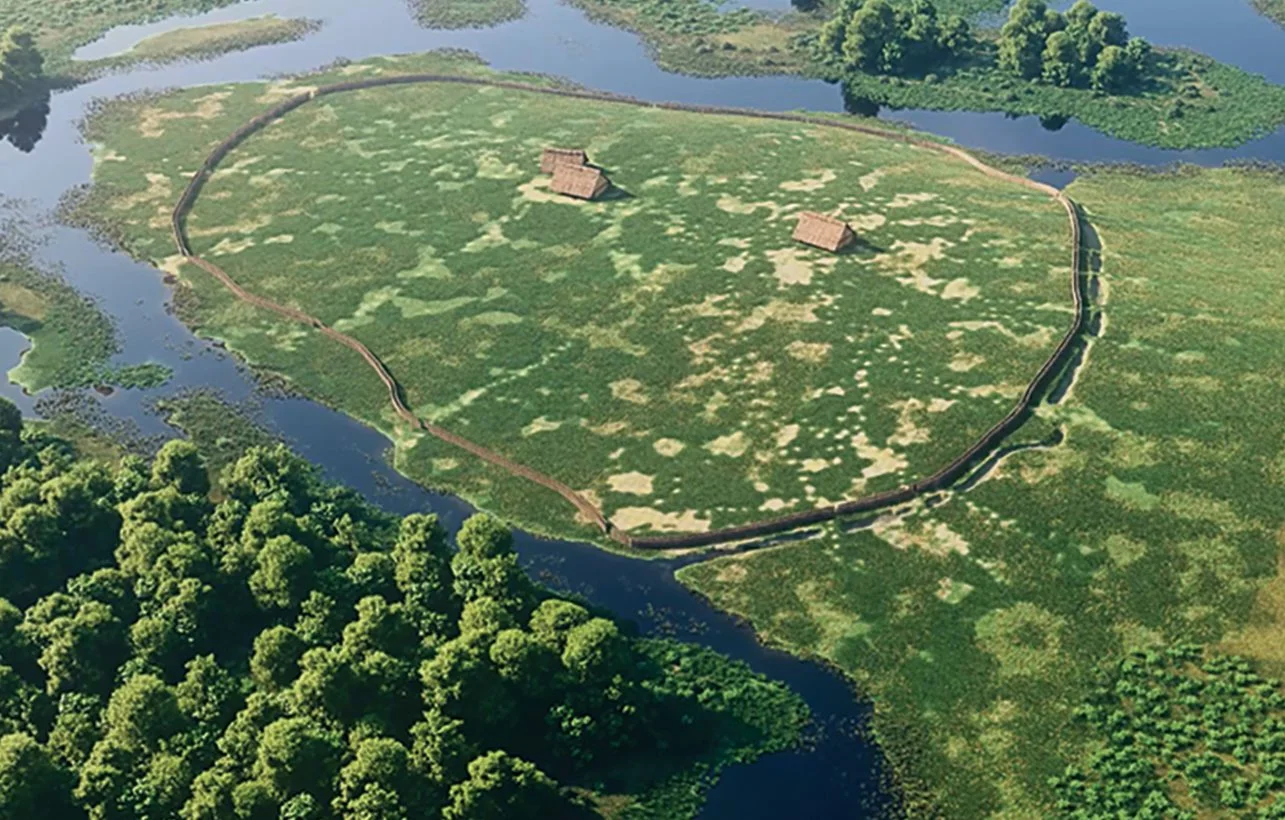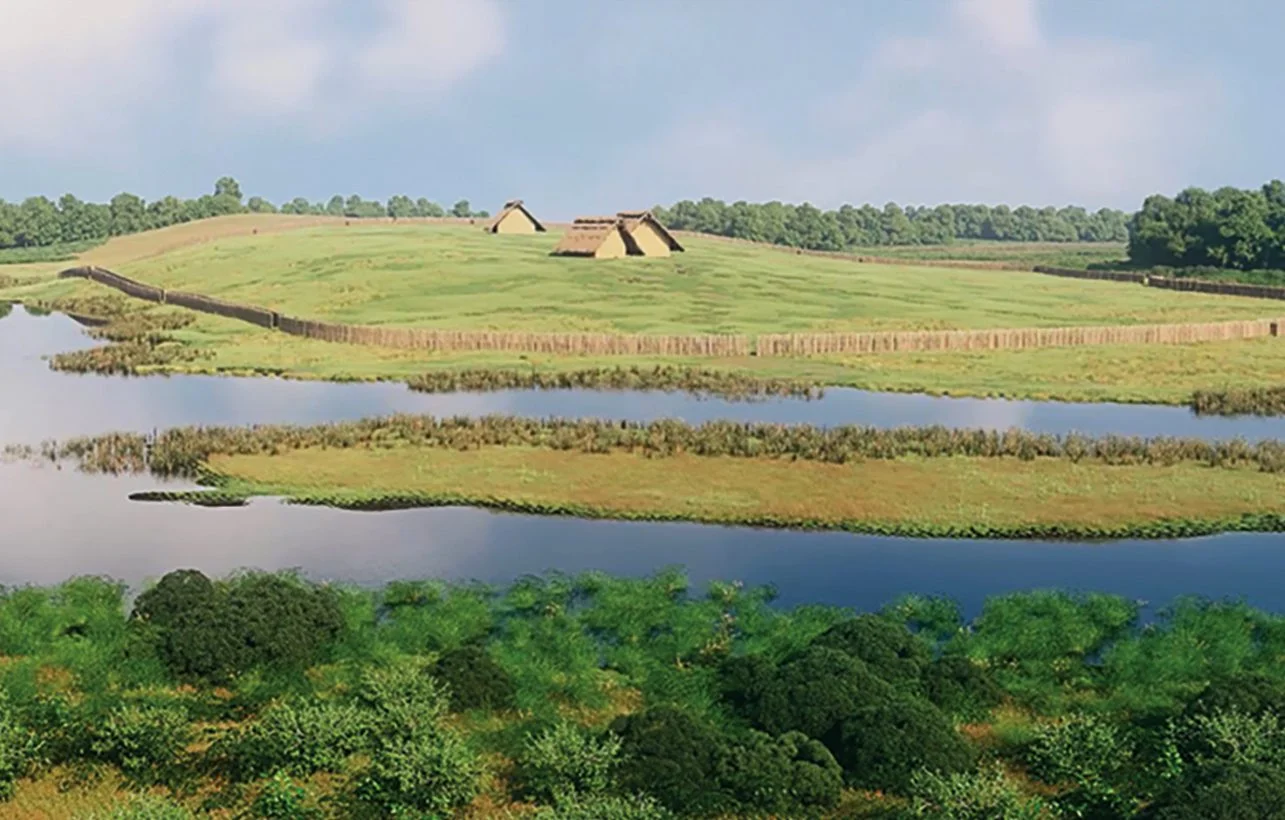Archaeologists excavating in France have discovered a 6,000-year-old settlement belonging to some of Europe’s early builders of megalithic monuments.
During the Neolithic period, people in west-central France constructed barrows and dolmens, but where they lived has been a mystery for archaeologists for over a century.
During an aerial survey of the Le Peu enclosure, the researchers found evidence of an early settlement, the results of which have been published in the journal Antiquity.
The study has revealed a palisade encircling several timber buildings built during the fifth millennium BC, making the wooden structures the oldest examples in the region and the first residential site contemporary with the Neolithic monument makers.

Archaeologists have identified three residential dwellings, each around 13 metres long, clustered together near the top of a small hill that overlooks the Tusson megalithic cemetery.
An analysis of the palaeosols recovered from the site suggests that it was located on a promontory bordered by a marsh. These natural defences were further fortified by a ditch palisade wall, with two monumental structures that guarded the entrance to the enclosure.
“The site reveals the existence of unique monumental architectures, probably defensive. This demonstrates a rise in Neolithic social tensions,” said Dr Vincent Ard from the French National Centre for Scientific Research.
All the buildings at the site were destroyed by fire around 4,400 BC, suggesting that the defences at Le Peu were insufficient at protecting the inhabitants during a time of conflict. However, such destruction helped to preserve the site.
The researchers plan to continue investigating the site to shed light on the lives of people only known from their monuments to the dead. Already it shows how their residential sites had a monumental scale, never before seen in prehistoric Atlantic society.
https://doi.org/10.15184/aqy.2022.169
Header Image Credit : Antiquity





